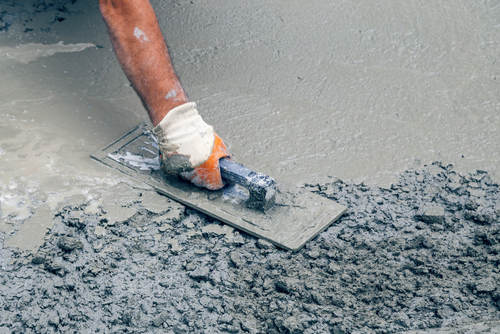If you’re planning on undertaking a concrete project, you may be wondering if you need permits. The answer to this question will depend on a variety of factors, including the size and scope of your project, as well as the regulations in your specific jurisdiction.

In this article, we’ll take a closer look at the types of concrete contractor projects that typically require permits, the permit application process, and some tips for ensuring that your project is in compliance with local regulations.
Types of Concrete Projects that Require Permits
Before we dive into the specifics of permit requirements, let’s take a look at the types of concrete projects that may require permits. Some examples of concrete projects that may require permits include:
- Pouring a new concrete foundation or slab: If you’re planning on pouring a new concrete foundation or slab, you may need a permit. This is because these types of projects can have a significant impact on the structural integrity of a building.
- Adding or extending a concrete patio or driveway: If you’re planning on adding or extending a concrete patio or driveway, you may need a permit. This is because these types of projects can impact the drainage of your property.
- Building a retaining wall: If you’re planning on building a retaining wall out of concrete, you may need a permit. This is because these types of projects can have an impact on the stability of the soil and nearby structures.
- Constructing a new building: If you’re planning on constructing a new building that will have a concrete foundation, you will almost certainly need a permit. This is because these types of projects can have a significant impact on the local environment and the safety of the surrounding community.
Permit Application Process
If you determine that you need a permit for your concrete project, the next step is to apply for one. The permit application process will vary depending on your location, but in general, you can expect to follow these steps:
- Determine what type of permit you need: The first step in the permit application process is to determine what type of permit you need. This will depend on the size and scope of your project, as well as the regulations in your specific jurisdiction.
- Gather the necessary documentation: Once you know what type of permit you need, you’ll need to gather the necessary documentation. This may include plans, drawings, and specifications for your project.
- Submit your application: Once you have all the necessary documentation, you can submit your permit application. This may involve filling out a form and paying a fee.
- Wait for approval: Once you’ve submitted your application, you’ll need to wait for approval. Depending on your location, this could take anywhere from a few days to several weeks.
- Begin your project: Once your permit has been approved, you can begin your project. It’s important to keep a copy of your permit on site in case of inspection.
Tips for Ensuring Compliance
If you’re planning on undertaking a concrete project, there are a few tips you can follow to ensure that you’re in compliance with local regulations:
- Research local regulations: Before you begin your project, take some time to research the local regulations in your area. This will help you determine what type of permit you need, as well as any other requirements you may need to meet.
- Work with a professional: If you’re unsure about the permit application process, consider working with a professional. A contractor or engineer with experience in concrete projects can help ensure that your project is in compliance with local regulations.
- Keep records: It’s important to keep records of all the documentation related to your project, including your permit, plans, and specifications. This will help ensure that you’re in compliance with local regulations, and can also be helpful in the event of an inspection or dispute.
- Communicate with your neighbors: Depending on the size and scope of your project, it may be a good idea to communicate with your neighbors. This can help ensure that they’re aware of the project and any potential disruptions, and can also help prevent any disputes down the line.
- Schedule inspections: Depending on your location, you may be required to schedule inspections at various points throughout your project. It’s important to make sure that these inspections are scheduled and completed in a timely manner to avoid any delays or issues.
- Follow safety guidelines: It’s important to follow all safety guidelines when working on a concrete project. This includes wearing appropriate safety gear, following proper procedures for mixing and pouring concrete, and ensuring that your worksite is safe and secure.
Conclusion
In conclusion, if you’re planning on undertaking a concrete contractor project, it’s important to determine whether or not you need a permit. This will depend on the size and scope of your project, as well as the regulations in your specific jurisdiction. If you do need a permit, it’s important to follow the permit application process and ensure that your project is in compliance with local regulations. By following these tips, you can help ensure that your concrete project is completed safely and successfully.
Jenco Companies
402 N Harrison St, Stockton, CA 95203, United States
1-209-931-8129
